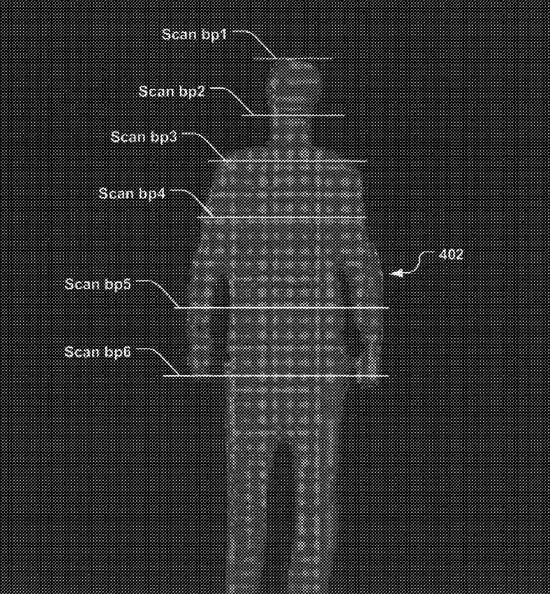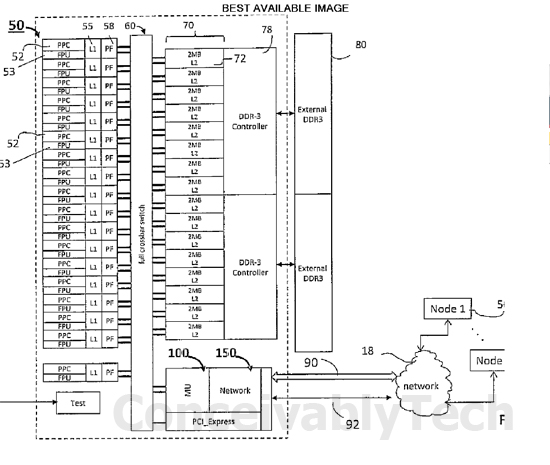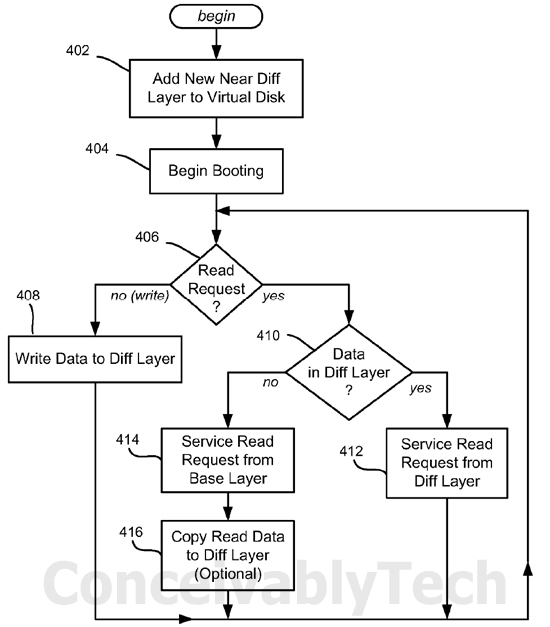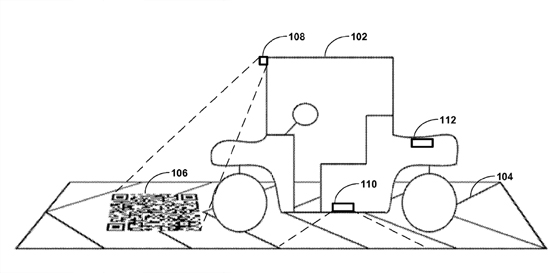The 5 Most Intriguing Patent Applications of 2011
These are the 2011 patent applications you should be aware of.
If you consider the fact that more than 220,000 patents will have been granted by the end of the year and even more patents were filed with the U.S. Patent and Trademark Office over the past 12 months, it is impossible to say which ones were the most significant patents of the year. Like every year, there were many patents that should neither have been granted nor filed in the first place. On the other hand, there were also those that were captivating, giving us an idea about how technology in the future will develop and affect every one of us. Among all of the patent applications and approvals in 2011, the following five were the most memorable ones of which you should be aware:
5. Microsoft Patent Application #20110109724: Body Scan
According to my count, at least 112 patents relating to the Kinect 3D sensor went through the USPTO in 2011. Most of them secure the basic technology behind Kinect as well as gestures, but this one may be referring to the next generation of Kinect, providing the first idea of what feature will define Kinect 2. It is safe to say that the new device will offer a far greater resolution, and this patent application could reveal what Microsoft will do with it:
From the patent application: “A depth image of a scene may be received, observed, or captured by a device. The depth image may then be analyzed to determine whether the depth image includes a human target. For example, the depth image may include one or more targets including a human target and non-human targets. Each of the targets may be flood filled and compared to a pattern to determine whether the target may be a human target. If one or more of the targets in the depth image includes a human target, the human target may be scanned. A skeletal model of the human target may then be generated based on the scan.”
This patent application hints that a future Kinect will eliminate the need for a user to create an avatar. Avatars may be replaced by surrogates in virtual worlds – surrogates that are automatically created based upon your body shape and your current (or customizable) clothing. In the future, Kinect may recreate you on the screen and integrate you even more deeply in game play and entertainment applications than you can experience today.
4. Apple Patent Application #20110194140: Walk-Up Printing without Drivers
Get Tom's Hardware's best news and in-depth reviews, straight to your inbox.
Granted, installing drivers isn’t a big deal anymore. However, if you have been around long enough, you remember what a pain in the neck drivers could be. (It once required skill to make Windows drivers work.) My very first feature article was a 900-word fool-proof guideline about how to find and install drivers on Windows 95. A continuously functioning Internet, as well as more intelligent software and hardware interfaces, have made driver discovery and management much easier. We are already seeing that the next frontier – driver management for mobile devices such as smartphones and tablets along with their different operating systems – is a difficult task. Apple has an elegant solution:
From the patent application: “During operation, the system uses a discovery protocol to identify printers that can be accessed by the computing device. Next, the system receives a selection of a printer that can be accessed by the computing device. The system then generates printer data for the print job. This can be accomplished in a number of ways. The system can use a driverless printing technique, which involves obtaining printer capability information from the selected printer and generating printer data for the selected printer based on the printer capability information. Alternatively, the system can use a printer-specific driver for the selected printer to generate the printer data. The system can also send the print job to a cloud, which includes one or more servers that provide a printing service, so that the cloud can generate the printer data. Finally, the system sends the generated printer data to the printer.”
Imagine a world in which you wouldn’t have to worry about drivers anymore; you can simply walk up to a printer and print a document. If Apple has its way, there will be three ways to access a printer in the future: via a conventional software driver, via a cloud service, and via a driverless access method that supports “universal” printing from any type of device.
3. IBM Patent Application #20110219208: Multi-Petascale Highly Efficient Parallel Supercomputer
Supercomputing may not directly impact our lives, but there is plenty of indirect contact ranging from climate or health research, to physical simulations, oil and gas exploitation and financial calculations. Supercomputers enable both academia and industry to tap into tremendous computing capability that lies beyond the imaginations of even the most sophisticated enthusiast user. If you are interested in computer technology, have had an opportunity to visit any significant computer installation and witnessed the massive effort to keep it running, you may have shared my fascination with it when a few years ago I had the pleasure to meet the people from the National Center for Supercomputing Applications at the University of Illinois. Planning, managing and taking advantage of the resources provided by a supercomputer is always at the cutting edge of computing and has my deepest respect.
We are currently experiencing an inflection point when economic superpowers are battling for dominance in this space, not only to attract scientific talent but to also lock in the prestige of being at the forefront of computer technology. In May 2008, we crossed the 1 Petaflop mark and crossed 10 Petaflops in November 2011 with Japan’s K Computer. IBM is mainly looked upon as the company to enable the U.S. to regain leadership in this space. A 649-page document filed in January provides an outlook on how the company will achieve 100 Petaflops, which translates to 100,000,000,000,000,000 (100 quadrillion) operations per second.
From the patent: “A Multi-Petascale Highly Efficient Parallel Supercomputer of 100 petaOPS-scale computing, at decreased cost, power and footprint, and that allows for a maximum packaging density of processing nodes from an interconnect point of view. The Supercomputer exploits technological advances in VLSI that enables a computing model where many processors can be integrated into a single Application Specific Integrated Circuit (ASIC). Each ASIC computing node comprises a system-on-chip ASIC utilizing four or more processors integrated into one die, with each having full access to all system resources and enabling adaptive partitioning of the processors to functions such as compute or messaging I/O on an application by application basis, and preferably, enable adaptive partitioning of functions in accordance with various algorithmic phases within an application, or if I/O or other processors are underutilized, then can participate in computation or communication nodes are interconnected by a five dimensional torus network with DMA that optimally maximize the throughput of packet communications between nodes and minimize latency.”
The system is based on the 20 Petaflop Sequoia system that uses IBM’s BlueGene/Q architecture. It will be deployed next year at the Lawrence Livermore National Laboratory (LLNL). IBM said that more than 100 Petaflops will be possible with 1,024 compute node ASICS in 512 racks, representing a total of 524,288 16-core PowerPC A2 CPUs, which will integrate 8,388,608 processing cores.
2. Microsoft Patent Application #20110197052: Fast Machine Booting Through Streaming Storage
Cloud computing remained one of the buzzwords this year. It’s among the worst-ever marketing terms in IT history. It is a fact, though, that much of our computing world will be based on services and cloud apps rather than local storage as we create networks comprised of PCs, notebooks, tablets and smartphones/superphones.
The upcoming Windows 8 carefully tests our willingness to accept cloud applications, while a future OS may be much more aggressive in adopting services. Microsoft’s streaming operating system patent application could be a key hint of the direction that Microsoft is taking.
From the patent: “Described is a technology by which a virtual hard disk is maintained between a far (e.g., remote) backing store and a near (e.g., local) backing store, which among other advantages facilitates fast booting of a machine coupled to the virtual hard disk. Read requests are serviced from the near backing store (e.g., a differencing layer) when the data is available thereon, or from the far backing store (e.g., a base layer) when not. The near backing store may be configured with a cache layer that corresponds to the base layer and a write differencing layer that stores writes, or a single differencing layer may be used for both caching read data and for storing write data. A background copy operation may be used to fill the cache until the far backing store data is no longer needed.”
Given Microsoft’s market share and ability to drive software changes for the masses, I consider this as one of the most significant computer software patents filed this year. Microsoft does not just target this technology at enterprises; it aims it at every conceivable computing device. There was some speculation that this patent application could refer to the experimental Barrelfish OS. It is worth noting that the inventor behind the patent is not a member of the Barrelfish team; a separate effort here is more than likely.
#1 Google Patent #8,078,349: Transitioning a Mixed-Mode Vehicle to Autonomous Mode
This is the only approved patent on my list. I should note that Google somehow succeeded in pushing this technology through the approval process much faster than the average patent. The original patent filing took place on May 11, 2011.
The patent received quite a bit of coverage as it is a key document securing a phase of autonomous driving. Specifically, the document describes the moment in which a hybrid-mode car switches from a human driver to autonomous drive.
From the Patent: “Disclosed are methods and devices for transitioning a mixed-mode autonomous vehicle from a human driven mode to an autonomously driven mode. Transitioning may include stopping a vehicle on a predefined landing strip and detecting a reference indicator. Based on the reference indicator, the vehicle may be able to know its exact position. Additionally, the vehicle may use the reference indictor to obtain an autonomous vehicle instruction via a URL. After the vehicle knows its precise location and has an autonomous vehicle instruction, it can operate in autonomous mode.”
We are seeing quite a number of patents that could hint at autonomous vehicles, but there was one element of this patent that struck me and gives this invention substantial credibility. Besides the fact that Google has autonomous vehicles on California roads already, its inventors are particularly noteworthy. Among the listed inventors are Christopher Urmson and Nathaniel Fairfield, both who joined Google from Carnegie Mellon’s Robotics Institute. Urmson is especially interesting because he was the technical leader of the Tartan racing team, which won the 2007 DARPA Urban Challenge for the university. Carnegie’s “Boss” vehicle, a heavily modified Chevy Tahoe SUV, completed a 55 mile urban course in 4 hours and 10 minutes and won the $2 million prize of the competition. If there was one person Google absolutely needed to have on its team to develop autonomous vehicles, it was Urmson. We should expect considerably more in 2012 from Google’s autonomous vehicle team, which is part of the mysterious Google X.
There were countless other significant inventions in 2011. These were my five favorites. Feel free to add yours in the comments section below. Don’t forget to add a link to the actual patent for all Tom’s readers.

Wolfgang Gruener is an experienced professional in digital strategy and content, specializing in web strategy, content architecture, user experience, and applying AI in content operations within the insurtech industry. His previous roles include Director, Digital Strategy and Content Experience at American Eagle, Managing Editor at TG Daily, and contributing to publications like Tom's Guide and Tom's Hardware.
-
phamhlam What do all these patents have in common? They are patent that only requires an idea with a sketch and tons of money.Reply -
memadmax I got lots of ideas for different things, but I won't move on any of them because of Apple and the other big wigs on their sue'ing spree...............Reply -
house70 phamhlamWhat do all these patents have in common? They are patent that only requires an idea with a sketch and tons of money.Yes, except for the Google patent regarding the autonomous vehicle; that is already done by Google and is working (the vehicle, I mean);also, Microsoft's body scan idea is based on kinect, which is already a reality; the rest, yes, just patent trolling. IBM's idea is also good, and if it is in the works already, then it is NOT trolling.Reply -
CKKwan If you have ever look at all other patents, you will find that these 5 are at least relevent in their own field.Reply -
livebriand How about the 5 most interesting lawsuits of 2011? You've got plenty to choose from.Reply -
zanny Patents in general stifle innovation. The patent system has been horribly disfigured from what it was meant to be. Originally, you patent an idea you put into practice so you can have a federally approved monopoly for a while to guarantee your ability to profit off it without anyone stealing the idea. Today, patents are used to maintain brands for eternity with no signs of letting them expire and become public domain, so once knowledge is patented it will never be available publically again, because any time big name patents (mainly Disney movies) come close to expiring, a few million dollars of "donations" later legislation is unanimously pushed through in the US to extend patent duration.Reply
These are all horrible in that they mean now ONLY Microsoft can make full body scanners and ONLY google and make self driving cars because they can sue and shut down anyone else that develops the technology completely orthogonal to anything Google / M$ do. They hold the keys to future innovation and will charge at the door for anyone to even try to use these same ideas until the patent system is fixed. It is terrible to think about. -
Sunfighterlc Im still waiting for my patent on the intergalactic space ship I drew years ago. the engines use a method of quantum distortion. God knows how, but I pointed an arrow to an engine and said it uses that method, pretty much like every other patent currently being entered.Reply -
kronos_cornelius Guys, instead of complaining, we should create a patent troll forum here. We all pitch in document creation and vetting. And the people involved in the patent get hold of it and harass other companies with it (or license it). If there is already such a thing, let me know.Reply
Maybe the reason we see these patents like such obvious ideas is because we are super smart (or super ignorant.. but I like the first reason better :-) -
blazorthon kronos_corneliusGuys, instead of complaining, we should create a patent troll forum here. We all pitch in document creation and vetting. And the people involved in the patent get hold of it and harass other companies with it (or license it). If there is already such a thing, let me know. Maybe the reason we see these patents like such obvious ideas is because we are super smart (or super ignorant.. but I like the first reason better :-)Reply
That actually seems like a good idea. Would be a nice place to look for some laughs each morning :) We could put a recommendation in for it. -
tonyljg tracking eye movement is a 3d reality will there be outside transmission and what is privacy. Anything in the cloud is no longer private information.Reply



